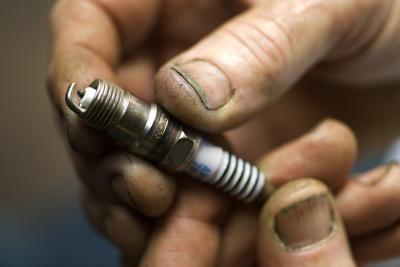
The spark plugs in your Ford Ranger pickup are essentially an insulator that allow high-voltage electricity to pass from the ignition coil via the spark-plug wire through the cylinder head. Once through the head, the spark plug produces an electrical spark inside the engine's cylinder to ignite the air and fuel in the cylinder. New spark plugs will increase the performance of the engine, increase fuel economy and allow the engine to run smoother.
Open the hood of your Ranger and locate the negative battery cable end on the negative terminal of the battery. Remove the retaining bolt from the battery cable end with a wrench and remove the battery cable from the battery terminal. Isolate the cable from the battery terminal while you are working.
Locate the spark plugs along the sides of the engine, just below the valve cover. On the four-cylinder engine the plugs are on the driver’s side and on the six-cylinder engines, there are three on each side of the engine.
Start with the front spark plug on the driver’s side of the engine. Grasp the spark plug wire by the boot and pull it off the spark plug. Lay it aside for now and do not remove any other spark-plug wires yet.
Insert a spark-plug socket into the spark plug hole and over the plug. Attach a ratchet and extension bar to the spark plug socket and turn the socket and spark plug counterclockwise to remove the spark plug from the cylinder head. Discard the old spark plug.
Thread a new spark plug into the cylinder head using your hands to avoid cross-threading it. Tighten the spark plug with a spark-plug socket and ratchet by turning it clockwise until it is snug, then turn it one-quarter turn more. Push the spark-plug wire onto the spark plug until it snaps in place.
Move to the next spark plug in line and repeat the process. Continue around the engine until you have changed all the plugs.
Install the negative battery cable on the negative battery terminal and tighten the retaining bolt with a wrench.